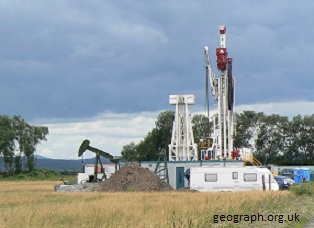Unconventional gas is a growing industry worldwide and there is interest in developing the industry (particularly coal bed methane and shale gas) in Scotland. However, the potential climate impacts associated with the exploration and extraction of unconventional gas in Scotland have been unclear.
Given the Scottish Government's ambitions for a low carbon economy, it is important to understand the potential GHG emissions associated with unconventional gas extraction, and what could be done to mitigate or reduce the risk of any such emissions.
SEPA and the Scottish Government asked ClimateXChange to undertake a desk-based study of the estimated greenhouse gas (GHG) emissions associated with the extraction of onshore unconventional gas in Scotland, from exploration to the point of fuel production.
This study (Lead author, Dr Clare Bond) finds that the key factors influencing the lifecycle emissions of unconventional gas extraction in Scotland are:
- Methane that could escape when the borehole is being prepared for gas production, or servicing a borehole during production.
- The impact of building associated infrastructure (such as drilling platforms, pipelines and roads) in areas with peat soil. This is because peat soil holds carbon which will be released when the soil is removed or drained when preparing the land for being built on.
- Fugitive methane emissions that escape from valves and pipes, which are difficult to capture.
The study concludes that the life-cycle greenhouse gas emissions per unit of energy from unconventional gas extraction in Scotland are likely to be equivalent to those of conventional gas extraction in Europe, if best practice is followed and building on peat is avoided.


